
How We Do Landing Page Optimization

We Start With Niche-Related Research
The first thing to do would be to research your niche and what your business needs are. We delve deep into comparing your goals and what your competitors have accomplished. It gives us a good starting point with the engagement.

We Move On To Targets And Goals
Identifying your business targets and goals is a critical part of the process. It helps you understand what exactly you need to accomplish. Targets also set expectations and boundaries for your business.

We Focus On Key Areas Of Your Website
Something that we do is evaluate your whole website for keywords and content. This is then used to create a plan for your landing page. This process can give us a better idea to develop a more powerful landing page.

We A/B Test Headlines And Copy
Headlines and copy are often forgotten components of a website's conversion funnel. But they are important because they decide whether or not a visitor becomes a paying customer. And this is critical to how a landing page performs.

We Fix On Visual Elements
We evaluate several different visual elements that are suited to your business. It can improve audience response to your website. Once that is done, we select the ones that work best with your website.

We Decide On CTA Buttons
Choosing the right CTAs has a positive impact on your website. Experts in our team develop creative ways to implement the right CTAs. Once we've highlighted a few, we prepare batches of landing pages for your approval.

We Check Website For Consistency
As part of our final round of checking, consistency across pages is relevant to any brand. Our team ensures that your landing pages align with all your other web pages. This is in terms of stylistic and functional choices.

We Finalize Our Reports
Once all the above steps have been completed, we will finalize a report to submit to you. The report contains all the initial findings and what we've been able to do for you. It works as a document of reference for you.
Benefits of Landing Page Optimization

Creating Copy That Is Easier To Read
One of the best advantages of better landing pages is the higher readability of content. The landing page copy is shorter and more hard-hitting. It helps get the message across using a smaller group of words.

Making A Great First Impression
Landing pages are a powerful tool for making a strong first impression on your website visitors. It sets the right expectations for your audience. Strong landing pages will entice your audience to follow through further on your website.

Getting Improved Leads And Traffic
An important part of the conversion process is the landing page. Landing pages can deliver whether you're a direct marketer or working with affiliates. They are the gateway through which leads enter your sales funnel.

Focusing More On Converting Copy
Another note to add to the landing page benefits is the conversion-focused copy. Unlike ordinary web pages, copy on landing pages aims to generate conversions. It offers a higher percentage of lead capture.

Supporting Your Business Directly
Landing pages are tools that contribute directly to your business revenue. It impacts metrics like ROI, revenue, conversions, and others. A landing page is a better platform for these metrics than other tools.

Generating Valuable Data And Insights
Using a landing page, you can generate important information about your website. Some examples are conversion rates, lead generation, and form completion. These are invaluable for helping your marketing funnel. It can be tuned to get better metrics.

Improving SEO Performance
Landing page optimization improves the SEO metrics of a website by several notches. Studies show landing pages can elevate SEO metrics by up to 200%. This means better business and revenue for you.

Increasing Website Trust And Credibility
A good reason brands invest in landing pages is their ability to reach out to people. They improve audience interaction with your business. This raises website trust and credibility for your brand.

Projecting More Brand Awareness
Landing pages are often used to provide value to visitors to motivate them to take action. The landing page content is typically focused on providing specific, value-driven information. It makes branding a lot easier for companies.

Building Better Sales Funnels
A robust landing page should be part of every sales funnel. Today, a landing page forms a more cohesive part of marketing than before. It gives audiences a more actionable content platform. People are more engaged with landing pages than other branded content.

Driving More Traffic And Downloads
When you're working to improve your web traffic, one of the first places to look is your website's landing page. Landing pages are great for getting more business throughput. It increases critical SEO metrics of your website, like traffic and conversions.

Improving Chances Of Results
Landing pages can provide a more hands-on marketing approach. People, in general, are more attuned to shorter copy that gets the message across. And this is what a landing page exactly does. It has all the information the visitor wants.
What is Landing Page Optimization
Landing pages effectively advertise a product/ service and bring more traffic to the website.
For example, take a look at the below screenshot of a landing page.

A good landing page should provide visitors with the necessary information, reduce the bounce rate, and increase the conversion rate. It plays a central role in the digital marketing campaigns for a brand.
Landing page optimization is a subset of CRO (Conversion Rate Optimization), where the quality and efficiency of a landing page are tested and tweaked to achieve the business goals.
Statistics show that optimizing the landing pages for an ad can increase the conversion rate up to 50%. Let’s read about landing page optimization in detail.
Importance of Landing Page Optimization (CRO)
![]() Increase Conversions
Increase Conversions
The primary purpose of landing page optimization is to increase conversions.
People who visit the landing page should not leave without performing the intended task.
PPC (Pay Per Click) campaigns, social media ads, search engine ads, and other online marketing campaigns use landing pages to take visitors directly to the target webpage.
The screenshot shows how they appear on SERPs.
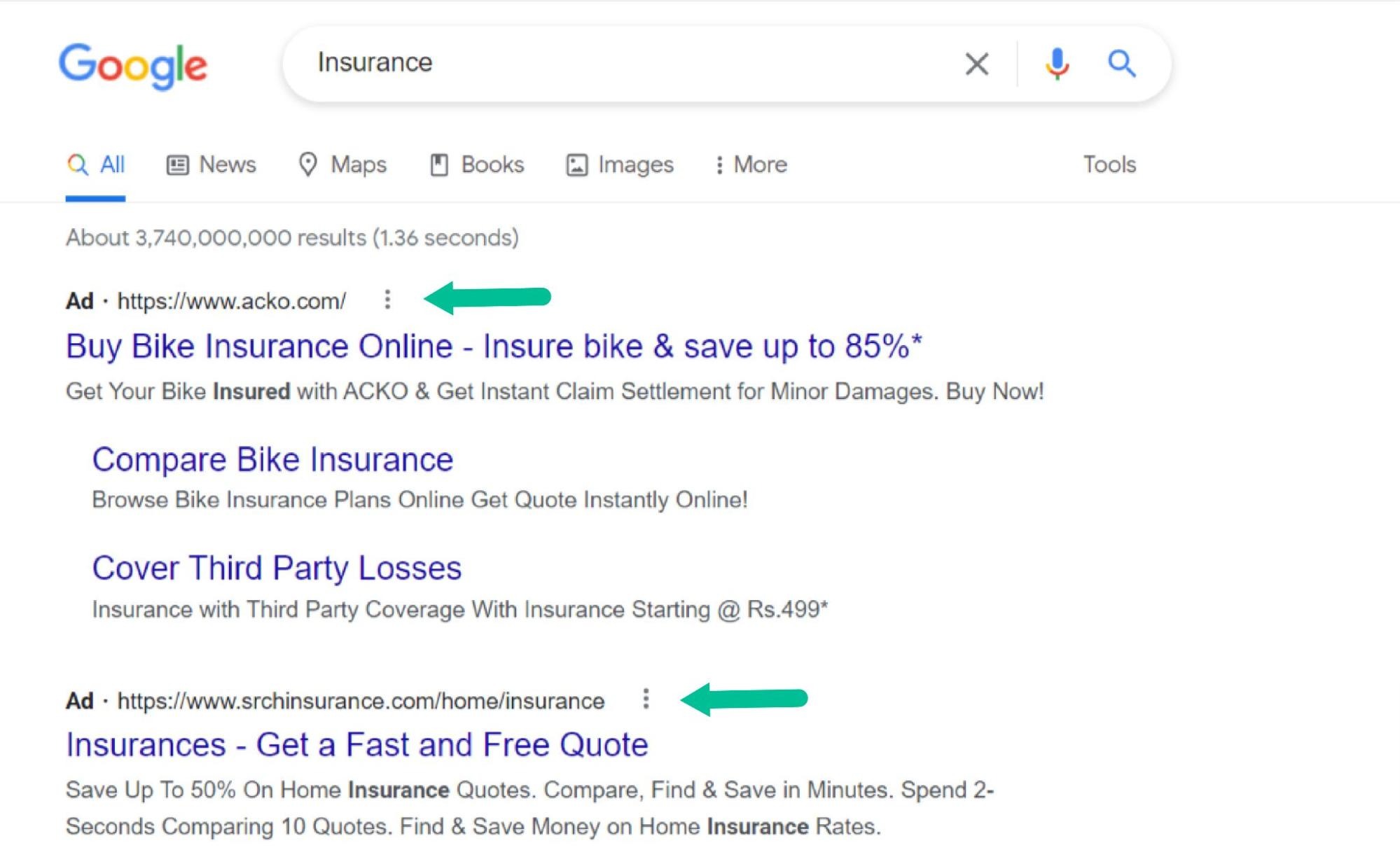
When the landing page is optimized, it will prompt more visitors to stay longer on the webpage, read/ understand the brand, and place an order or subscribe to the list. The data collected through landing pages help brands identify potential leads and convert them to customers.
![]() Better Organic Search Results
Better Organic Search Results
Landing pages are essential for a business website because they offer visitors an easy way to take the action you want them to.
When search engines see that users are gaining information from your site, they increase the visibility of your website for the related keywords. It will result in your website showing up among the top search results.
For example, the below-landing pages on SERPs appear on top without spending a penny on ads.
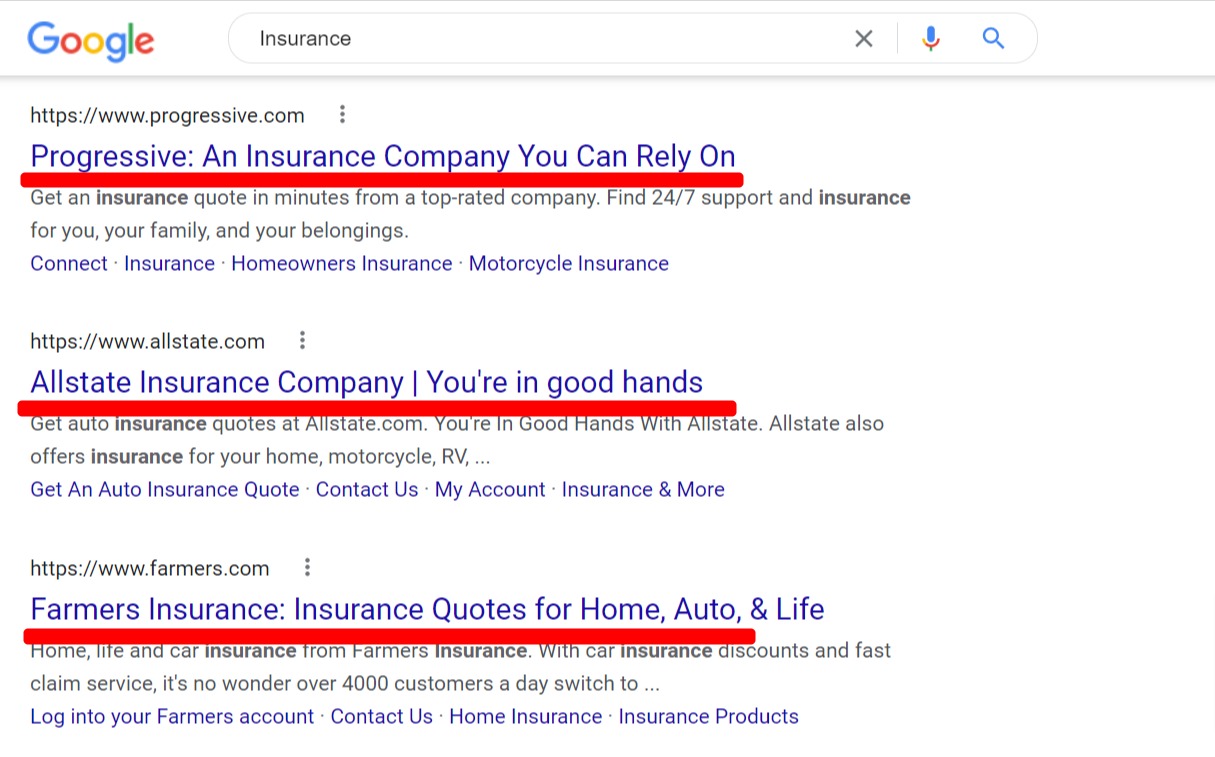
In short, a landing page increases the conversion rate, which increases the search engine rank and visibility of the website. It further expands your chances of attracting more users to the brand.
![]() Increased ROI for PPC
Increased ROI for PPC
Landing pages are designed for specific purposes. The landing page focuses entirely on a product/ service offered by the brand.
Creating a PPC campaign for a product and linking it to the landing page improves the user engagement rate. An optimized landing page brings more clicks on the PPC ad and additional traffic to the website.
The PPC campaign is considered successful when there’s an increase in the click to conversion ratio. The money spent to run the PPC ads comes back to the business in subscriptions, sales, and more customers.
![]() Focus on Specific Keywords
Focus on Specific Keywords
There are several keywords related to the same niche. It is challenging to use all the high-volume keywords on the same page.
Creating a landing page for specific keywords or phrases will help in covering all the important keywords relevant to the product/ service.
You can find the most relevant, trending, and user intent keywords using Google’s free keyword planner.
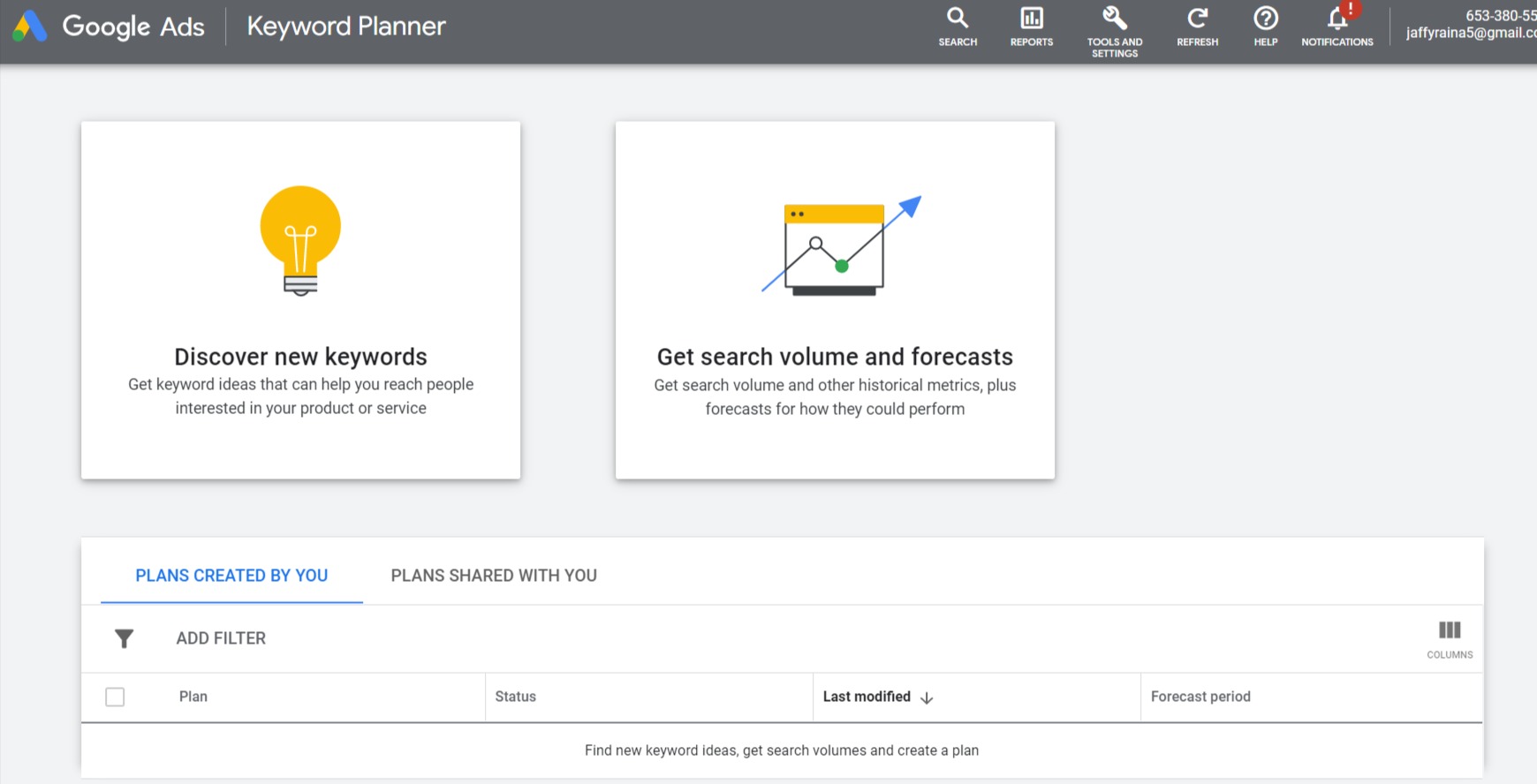
By optimizing the landing page, you bridge the gap between the user requirements and your website.
Though optimizing the web pages will help you achieve a higher rank, optimizing the landing page will give you a chance to focus on highly specific keywords and get to the top place on the SERPs.
![]() Enhance Brand Reputation
Enhance Brand Reputation
One of the tips for successful landing page optimization is to add customer reviews and testimonials to the target page.
For Example, take a look at the below-landing page screenshot of the software.
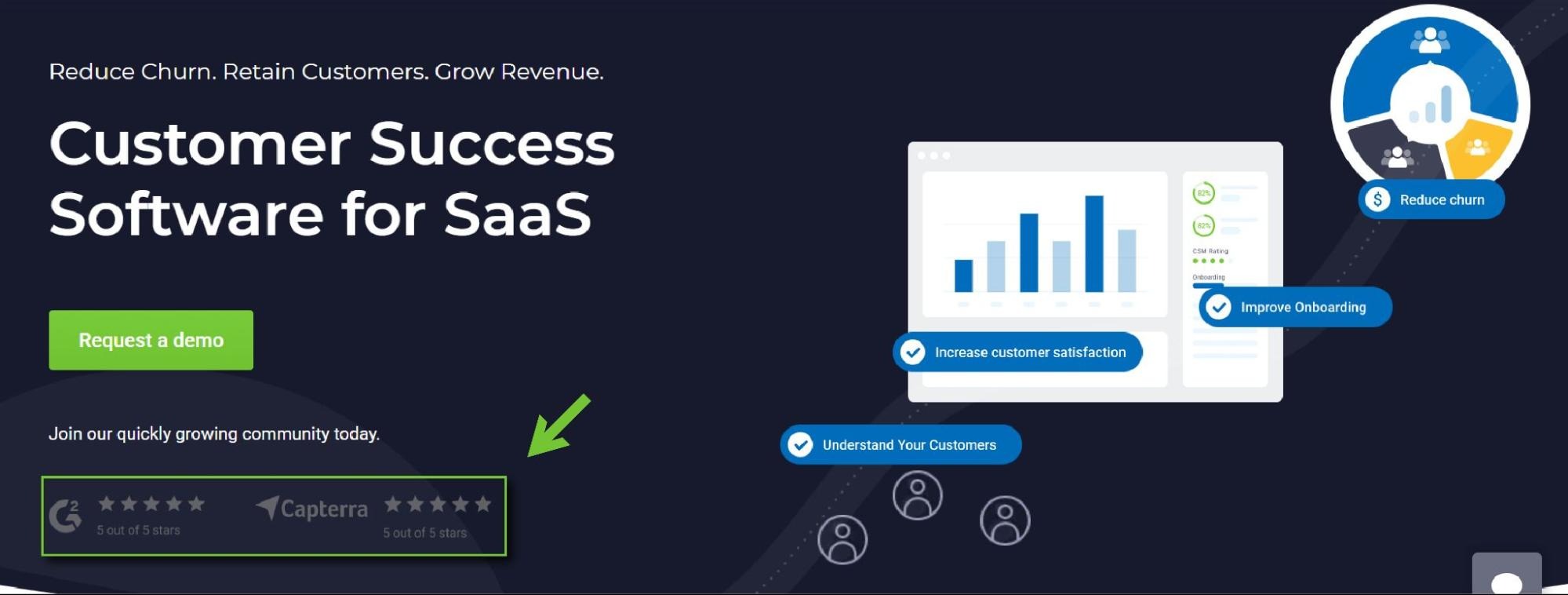
When visitors click the ad and visit the landing page, they see glowing reviews and recommendations by existing buyers/ subscribers. It creates a positive impression on them and increases the brand's reputation.
A product/ service with good reviews brings credibility to the brand and urges visitors to try the product for themselves. Optimizing the landing page increase the online reputation of your business and enhances trust.
![]() Data Collection and Analytics
Data Collection and Analytics
A landing page is optimized to ensure that it retains focus on the purpose and doesn’t distract, confuse, or bore the visitor. That makes it easy to run analytics and gather user information.
Understanding the conversion funnel and planning the customer’s journey with the business becomes simpler when you use the analytics collected from the landing page.
Check Google Analytics to analyze landing page data and see how it performs online.
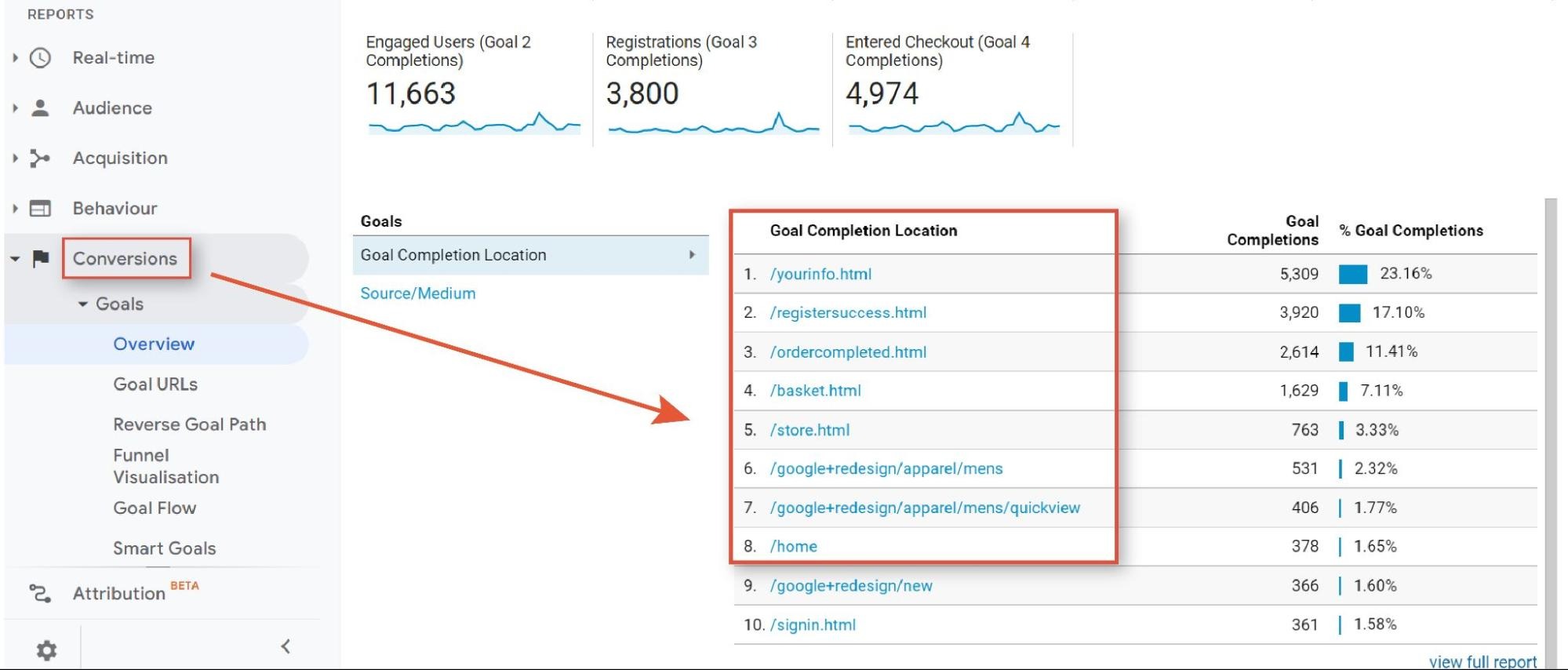
For example, when you place ads on Google, you can use Google Ads to determine the campaign's effectiveness. The insights will be clear and detailed when the ads are linked to an optimized landing page rather than the home page.
![]() One Call-to-Action
One Call-to-Action
The home page and other web pages have multiple CTA buttons and links that take visitors in different directions. It can be baffling to the user to know which link to follow and where to go.
Moreover, the user will be easily distracted when there is more information than necessary. An optimized landing page has a single call to action.
Even if the landing page has more than one button, they prompt the user to perform the same action. It minimizes confusion and increases conversion as the user will stay focused on the intended product/ service.
For example, there are 4 CTAs on a single landing page in the below image.

![]() Lower Bounce Rate
Lower Bounce Rate
High bounce rates are a cause of concern for many websites. Users don’t have the time and patience to search through a long home page to find what they want.
You can find the bounce rate of each landing page in the “Site content” of the Google Analytics report.

If the link on the SERP doesn’t lead them to the specific information, they’ll exit the page in a couple of seconds. It can harm the website's rank and domain authority.
Optimizing the landing pages lowers the bounce rate by providing users with exactly what they want. Users spend considerable time on the landing page to skim through the details, thus reducing the bounce rate.
Landing Page Optimization Tips
![]() Keep the Context Clear and Precise
Keep the Context Clear and Precise
A good landing page should speak for itself and inspire positive emotions in the visitors. The intent of the landing page should be clear the instant a visitor opens the page.
The visitor should know what the page is about when they see the link on the search results page. The content has to be neat, clear, and precise.
Tell them what you are offering in simple and no-nonsense terms.
Keywords and key phrases will help you create a headline that attracts users and explains what you offer.
- Use power words like ‘empower’, ‘monetize’, ‘save’, ‘discount’, etc., to make your intent clear.
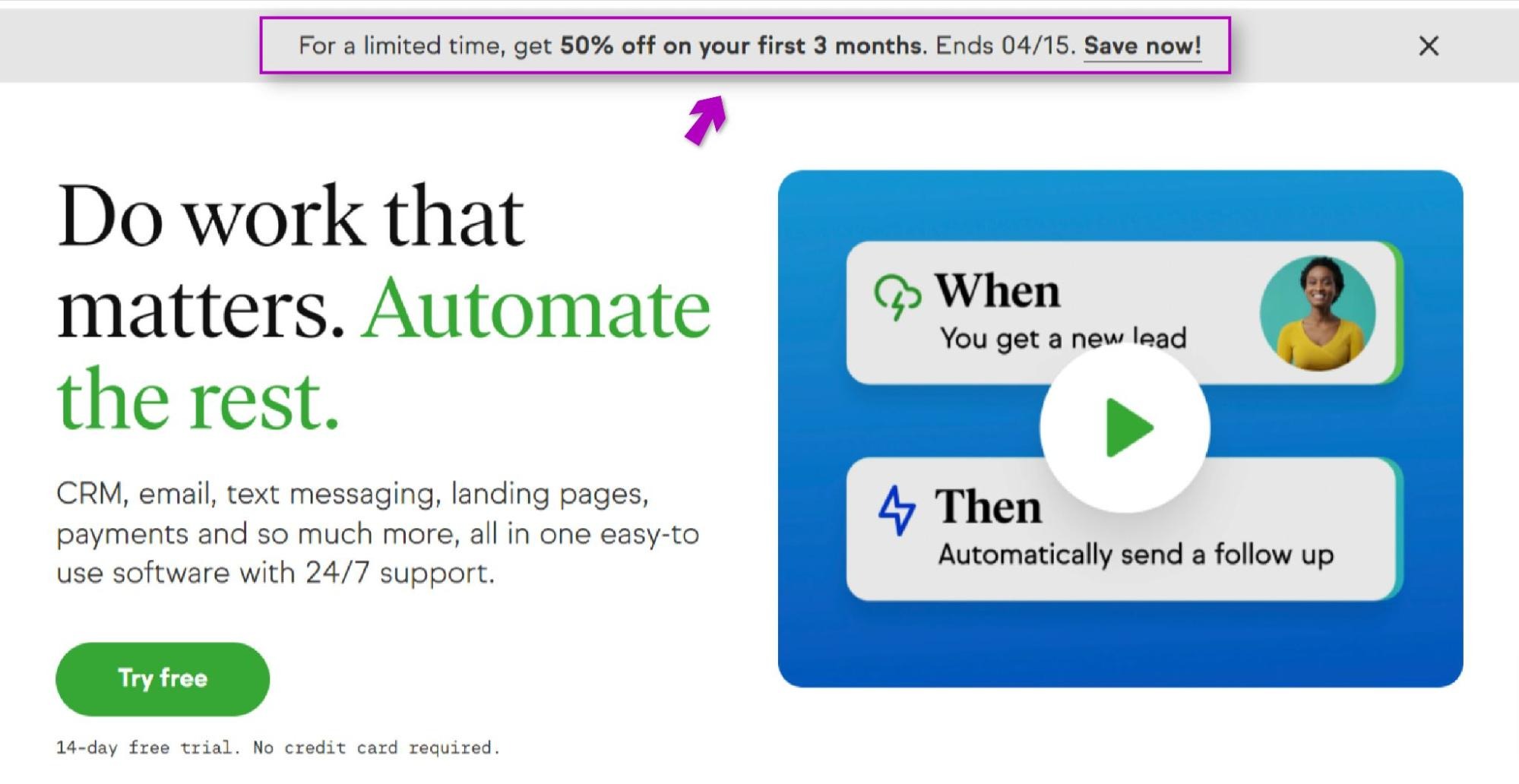
- Use the headline to sell the product/ service.
- Inspire confidence by taking an authoritative stand in tone and intent.
![]() Keep It Simple
Keep It Simple
It might seem counterintuitive, but simplicity is the best way to create an attractive landing page.
Get rid of unwanted clutter by removing widgets, excess images, multiple headlines, etc. If the landing page is designed for SEO services, the headline should reflect the same.
For example, all HubSpot landing pages are quite simple yet attractive.

Instead of adding long paragraphs of information and many images, use bullet points or icons to ‘show’ what you offer. An optimized landing page should make the user feel relaxed yet curious to know more.
- Format the content in a neat layout with appropriate headings, pointers, and sections.
- The entire text should lead the visitors to the same call to action and emphasize its purpose.
- Place the actual/ real picture of the product/ service in a prominent place on the landing page.
![]() Add Info Above the Fold
Add Info Above the Fold
The structure and layout of the landing page have a critical impact on the user experience.
When we say add info above the fold, it means to place vital information at the top, precisely where the visitors look immediately after opening a link.
The title, subtitle, etc., come right at the top. This top part of the landing page should show users what to expect and include a CTA in clear terms.
Here’s a great example to show it.
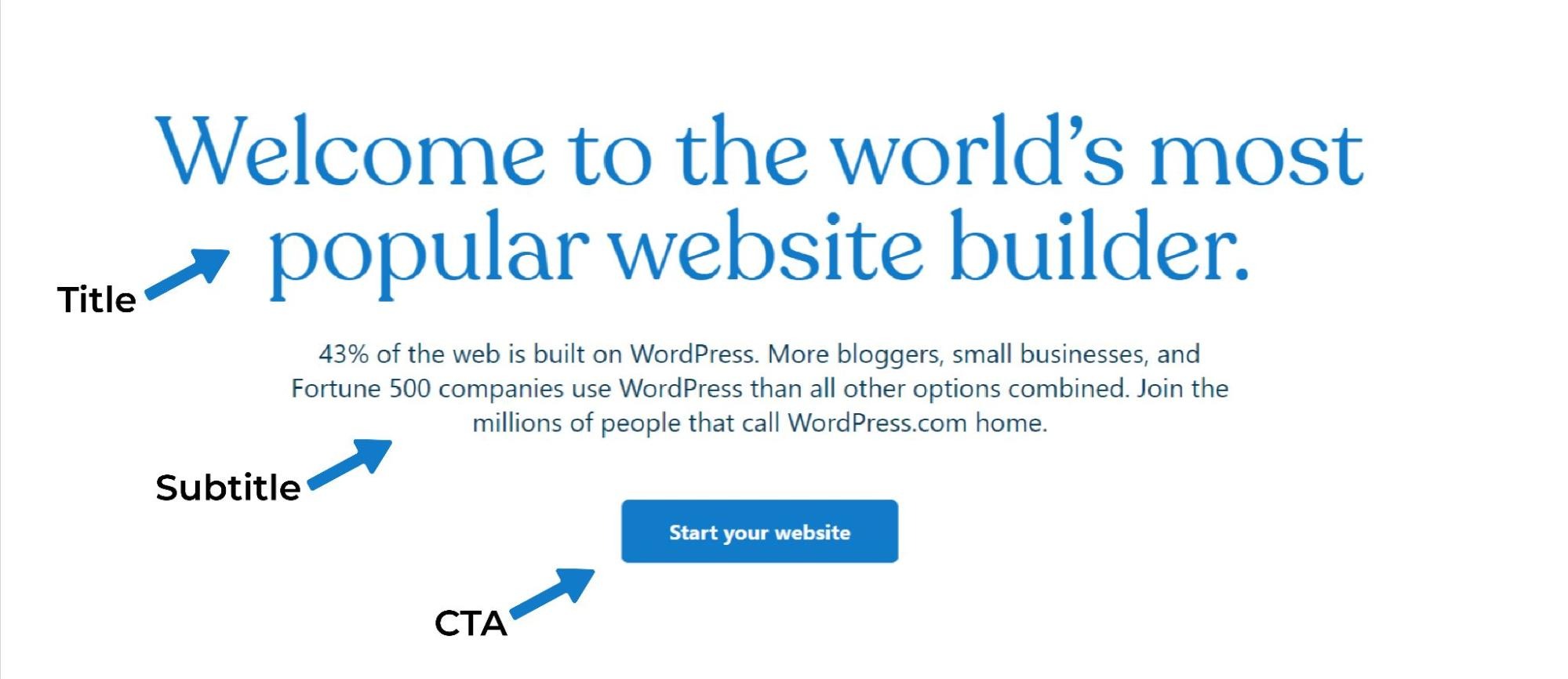
Check out the below tools to build and optimize the landing pages:
- Unbounce: It is an intuitive and user-friendly landing page builder with various templates and WordPress integration.
- Leadpages: It is a cost-effective tool with various features to fine-tune the landing page and increase conversions.
- GetResponse: It is a diverse landing page builder used to create mobile-responsive pages, email offerings, and webinars.
![]() Provide Limited Period Offers
Provide Limited Period Offers
If there’s one thing people can’t resist, it is limited period deals and discounts. When there’s a clock ticking on the landing page, customers will feel anxious to grab the offer before it ends.
Add a real-time countdown timer to the landing page to urge visitors to complete the action without further delay.
These look li

Use the below timer tools/ widgets on the landing page and create a sense of urgency.
- UpViral: It is the best giveaway software with a plethora of features. It allows you to choose winners in multiple methods.
- Powr Countdown Timer: It allows you to add countdown timers, testimonial widgets, and more to the landing page.
- Elfsight Countdown Timer: It is a user-friendly mobile responsive countdown timer widget for landing pages. It is also available for free.
![]() Emphasize the Call-to-Action Button
Emphasize the Call-to-Action Button
The CTA button is where the magic happens. That’s how we calculate the conversion rate, isn’t it?
The call to action button is the most crucial aspect of the landing page and needs to be carefully optimized to increase conversions.
The CTA should not confuse, scare, or frustrate the visitor. The user shouldn’t wonder what will happen if they click on the CTA button.
For example, the screenshot below shows a landing page with two CTA’s leading to the same action. You should avoid These kinds of CTAs.

Stay away from fancy words and thesaurus. Furthermore, don’t use long sentences or lengthy phrases on the CTA buttons. The content should be less than six or seven words.
- Don’t add too many CTA buttons on a short landing page.
- Use the correct color scheme to make the buttons stand out.
- Write the CTA in clear words and simple language every visitor can understand.
![]() Where Is the Contact Information?
Where Is the Contact Information?
Keeping the landing page simple and without distractions doesn’t mean removing the contact information. What if the users want to ask you something?
They need to know where and how to contact you for more information. A tiny help center button at the top or bottom of the landing page will also do the job.
Luckily, there are different ways to include contact information on the landing pages. Make it easy for the visitors to contact you by:
- Updating your NAP (Name, Address, & Phone Number) in the footer or the contact form.
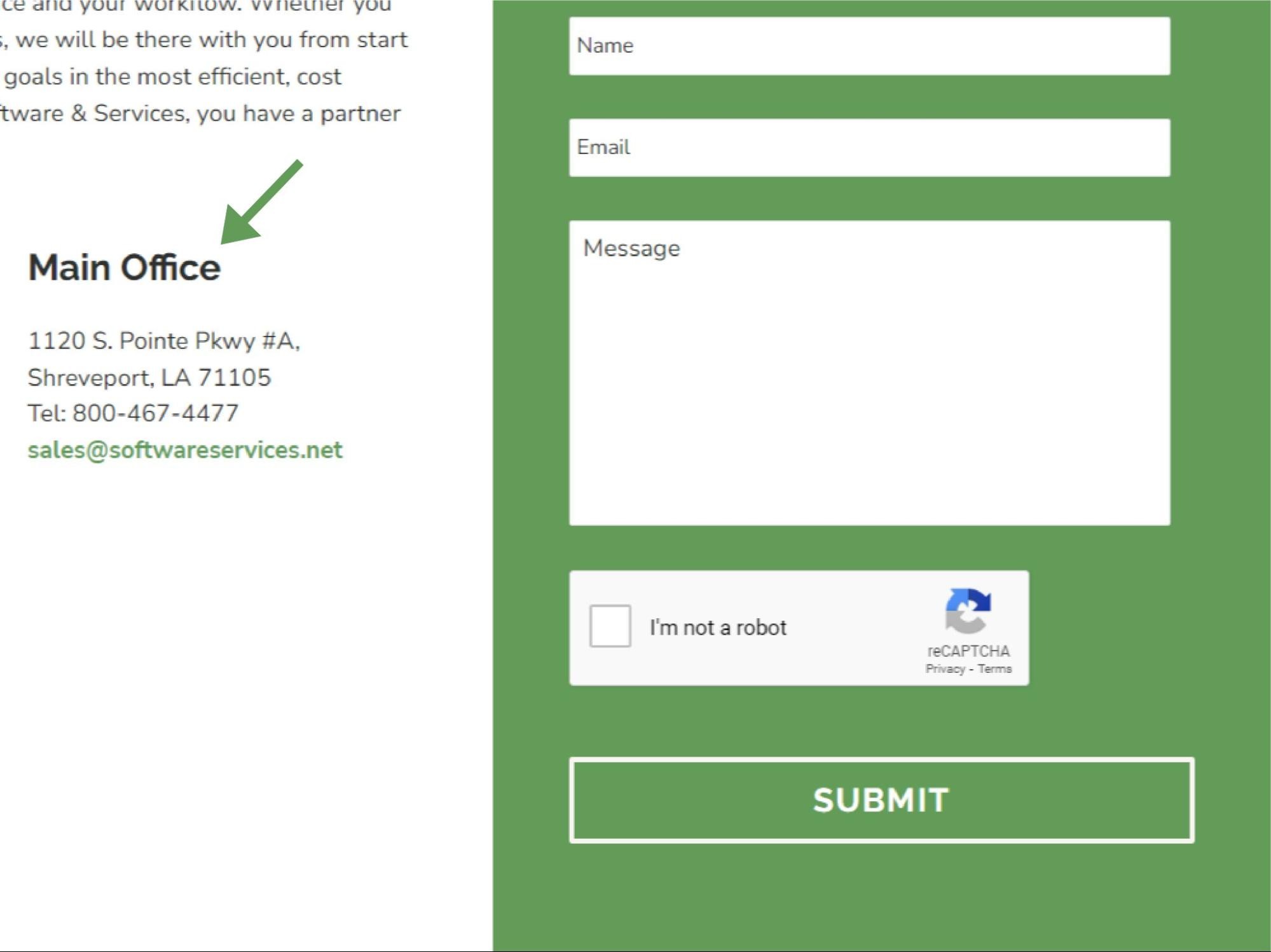
- Hyper-linking the NAP information with the website's home page but without diverting the attention from CTA.
- Adding a live chat (human or bots) option to the landing page for users to contact you directly.
![]() Add Media to the Landing Page
Add Media to the Landing Page
Visual media is effective in retaining the customer’s attention. However, too many images or videos will clutter the landing page and create the opposite effect.
Keep it simple, as in Rand Fishkin's Sparktoro, simple, attractive, and smaller.

So how do you add media to the landing page without overloading it?
Content sliders are similar to a PowerPoint presentation, where one slide plays after another to share information without messing with the page layout.
Try the following plug-ins to add content sliders to the landing page:
- Nivo Slider: It is a most-used content slider that works with jQuery and WordPress. It offers readymade themes and customization.
- Elastic Content Slider: A jQuery responsive content slider with a navigation tab at the bottom for easy use.
- Glide: It is a lightweight JavaScript ES6 content slider designed for fast and flexible use. You can also add more modules to it. .
![]() Consistency Is Crucial
Consistency Is Crucial
The information shared on the Internet and the landing pages must be consistent. Visual consistency is vital to making the marketing campaign a success.
Everything needs to be consistent and aligned with the information on the landing page, from the color scheme to the wording, structuring, and placement of coupon codes (or discount offers).
When a user sees an image with an ad and opens the link to find a different color scheme or layout, it creates momentary confusion in them. This can increase the bounce rate.
- Ensure that the offer is worded the same (or similar) in ads on different platforms.
- Use the same images and keywords to create a sense of familiarity.
- Use the same phrasing (of the ad) on the landing page to assure the visitors.
![]() Use Testimonials for Persuasion
Use Testimonials for Persuasion
People want to know that others have used the product/ service and are happy with the results.
At the same time, they are aware that reviews can be artificially created and posted. It’s vital to add genuine customer testimonials to the landing page to convince and persuade the visitors to try the business.
For example, the testimonials from industry influencers, like Brian Dean of Backlinko, build credibility for SEO tools.
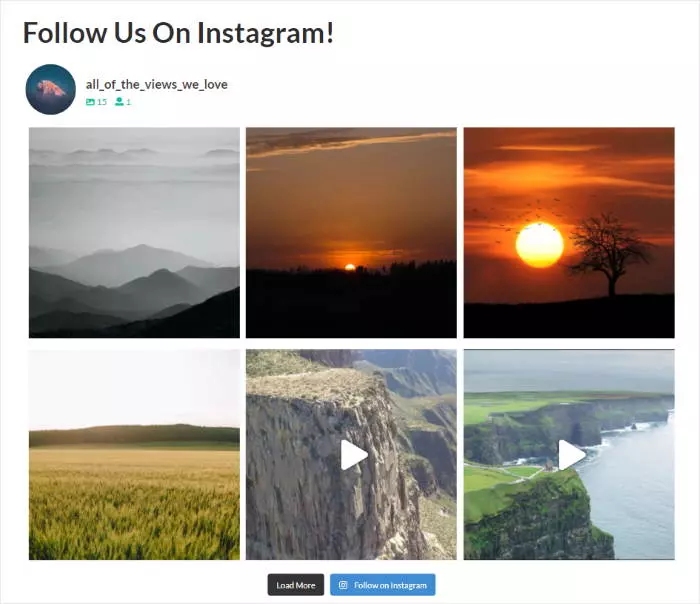
Give them proof that your customers are happy with your offerings. There are different ways to add user testimonials while ensuring their authenticity:
- Include the customer’s full name and a headshot for authenticity and credibility.
- Add video testimonials using slider widgets. Make sure the duration of the videos is the same
- Use a widget to directly bring the best customer reviews from GMB, marketplaces, social media, or third-party review sites.
![]() Optimize for Search Engines
Optimize for Search Engines
Optimizing the landing pages for search engines is compulsory.
How else will the webpage be indexed by the search engine and show up for the relevant keywords?
The landing page should rank high on the SERPs’ and appear in the top three search results.
We’ve listed the top three tools to optimize the landing pages to increase conversions:
- Hotjar: Hotjar gives real-time analytics and runs A/B testing to assess the landing page. There is a free plan, and the subscriptions are affordable.

- EngageBay: Engagebay is comprehensive digital marketing software with an extensive template library and customization abilities. It is cost-effective and has a free basic plan.
- Visual Website Optimizer: It tests websites and landing pages to optimize their performance. It is free and user-friendly.
![]() Place Exit Popups
Place Exit Popups
A popup window appears on the front of an existing webpage to provide more information or present an offer to the visitor. When optimizing the landing pages, make sure not to add a popup soon after the user opens the webpage.
Instead, add an exit popup that appears when the user moves away from the landing page. It will make them take a second look or linger for a few extra seconds.
Here’s a screenshot showing the same exit pop-up when the user tries to move away from the page.
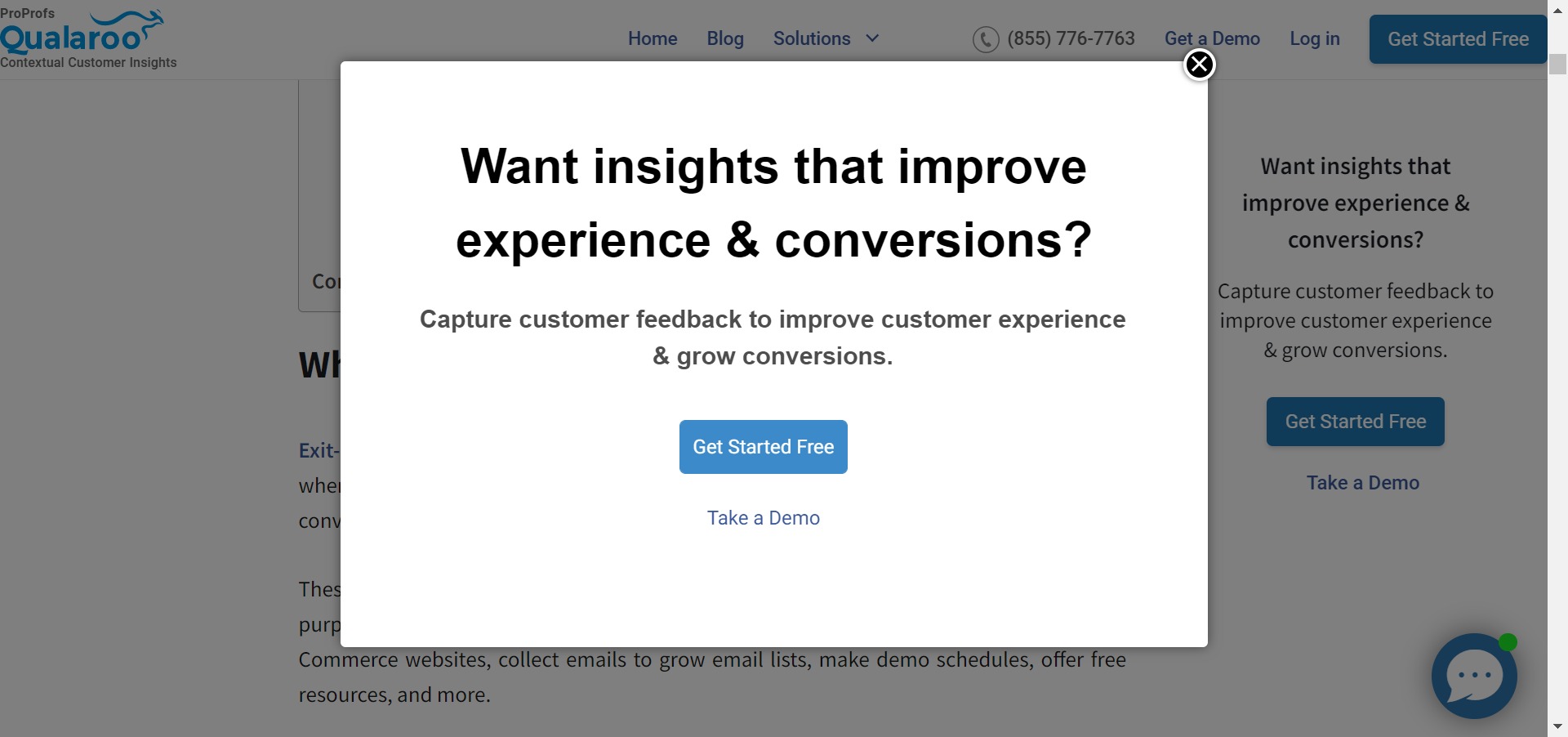
- Qualaroo: It is popular feedback and survey software with customizable content to add exit popups and increase retention.
- Optinmonster: It is a free (& paid) exit-intent popup tool and lead-generating software. It allows A/B testing and can be customized.
- HubSpot Exit Intent Forms: This tool belongs to HubSpot’s Marketing Hub package and can be scaled to suit your landing page requirements.
![]() Conduct A/B Tests for Every Element
Conduct A/B Tests for Every Element
A/B testing, known as split testing, determines which of the two options gives better results.
You need to perform the A/B tests for every element on the landing page to create the ultimate combination of the best. You the data collected to optimize the landing page and increase conversions.
Tools to use for A/B testing are:
- HubSpot & Kissmetrics' A/B Testing Kit: It is a free testing tool designed for startups and small businesses and comes with a detailed instruction guide.
- Google Optimize: It is a free testing tool by the search engine giant. It is user-friendly and can be tailored to suit your needs.
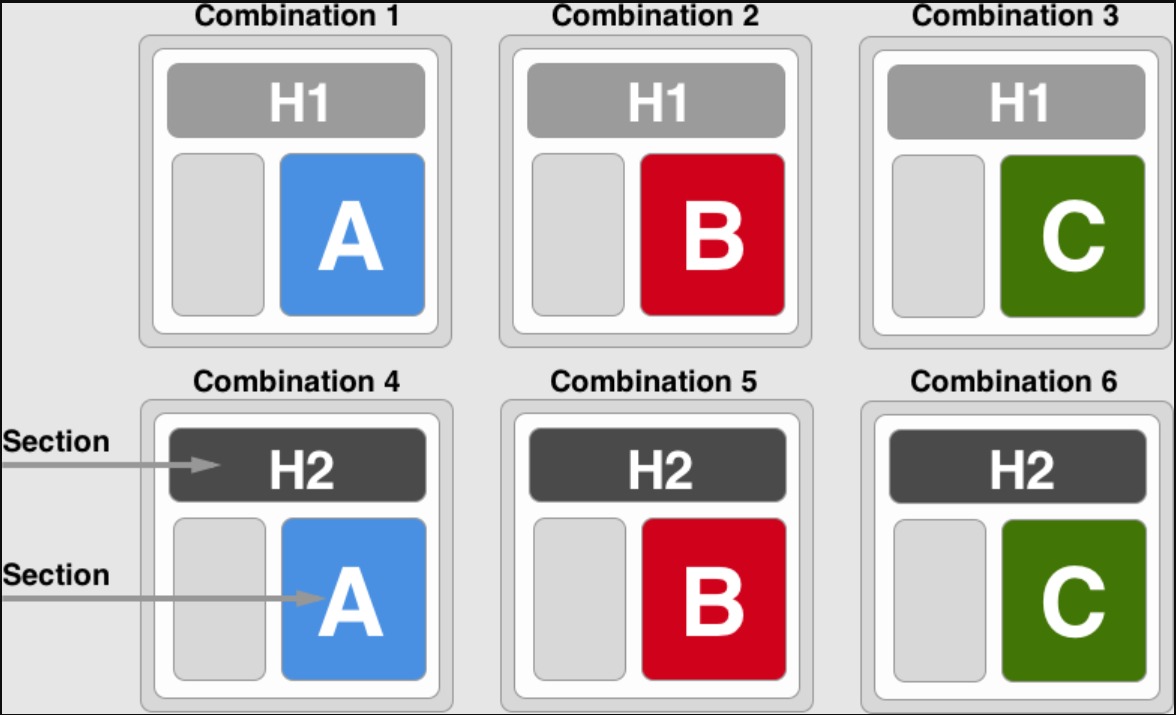
- Crazy Egg: It is a user-friendly (no-code) testing tool with cost-effective pricing and intuitive conversion tracking.
Common Landing Page Optimization Mistakes People Make
![]() Not Enough Landing Pages
Not Enough Landing Pages
Do you know that business websites with more landing pages had better results than websites with fewer landing pages?
That’s because the landing page has a specific purpose or intent. It should deal with an exclusive product/ service and not resemble the home page.
Create more landing pages to suit the buyer's specifications instead of trying to attract customers from different segments using the same landing page.
For example, Hubspot has individual landing pages for each product.

Here’s how to plan landing pages for the website:
- Create a landing page for each category, segment, product, and location. Don’t dump everything on one page.
- Be highly specific about the landing page's product/ service/ location. Don’t add links to other landing pages.
- The website may have multiple landing pages. There are no restrictions.
![]() Too Many Distractions
Too Many Distractions
Understandably, you want to provide as much information as possible to convince the user. However, you have to be careful about elements that can distract visitors and prevent them from performing the intended action.
When users visit a landing page, they have to complete the action (subscribe, buy, fill a form, etc.), and sharing extra information or filling up the page will distract them and lead to fewer conversions.
For example, take a look at the below screenshot, which shows what a user should do when he is on the page.

Here’s how to avoid distractions on the landing page:
- Placing the file in the wrong directory
- Remove excess images, especially those that don’t add any value to the page. Retain high-quality images.
- Delete unwanted paragraphs of text. Anything that doesn’t talk about the product/ service being promoted should be removed.
- Did you backlink or hyperlink from the landing page to other web pages? Remove the excess links and keep only the CTAs
![]() Sparse or Lack of Information
Sparse or Lack of Information
Avoiding distractions or keeping it simple doesn’t mean the landing page has to be sparse or not provide enough information to the visitors. There should be a balance where essential details are shared in a readable format.
For example, if the landing page is for runner shoes, it needs to talk about the material of the shoes, the specifications, price, benefits in brief, and customer testimonials.
Here’s an example of how it should provide vital details.

The user shouldn’t have to search elsewhere to know more.
- Don’t leave too many white spaces on the landing page for the simplistic effect. Details should be provided when necessary.
- Create a checklist of must-add information and use it when working on the content.
- Get the landing page reviewed by a third party to understand if the information is sufficient or not.
![]() Not Paying Attention to User Experience
Not Paying Attention to User Experience
The user experience is a critical element to consider when creating a landing page. Users don’t have the time, patience, or inclination to figure things out.
Intricate webpage layouts may appear sophisticated or artsy, but they are unsuitable for landing pages.
The landing page must be direct and hit the bull’s eye in a few seconds. What to avoid when designing the landing page?
For example, look at the below screenshot of the landing page having unaligned bad content. This is a big turn-off for most users.

Take a look:
- Complicated layout or structuring where a user cannot determine what to read first.
- A super lengthy landing page that requires continuous scrolling.
- Too many steps to perform to complete the action (placing an order or filling a form).
Analyze your competitors' landing pages to get a better idea about how to increase user experience for your landing page.
![]() Ignoring Buyer Concerns
Ignoring Buyer Concerns
Are you not getting enough clicks despite offering the best deal?
You forgot to address the buyers’ concerns and didn’t do anything to assure them of your credibility.
You can mention facts to prove your authority in the industry, as shown in the below image.

People will be cautious when trying a new brand/ business. It’s your responsibility to assure them of your brand and provide an incentive to give them one last push.
Focus on emphasizing and highlighting the following aspects on the landing pages:
- Do you offer free shipping services? Make sure to alert the user about this offer. It’s an incentive to buy.
- Add a link to the privacy policy in the footer. Users should feel confident enough to share their details with you.
- Did you win awards or titles? Display the icons in the header or footer to prove that the business is trustworthy.
![]() Slow Page Loading Times
Slow Page Loading Times
A webpage that takes more than two or three seconds to load will likely lose visitors.
People want fast services, and in the world of 4G and 5G networks, you cannot have a landing page that takes ten or twelve seconds to load. The landing page should be optimized to load in the blink of an eye.
Use the below tools to measure the page loading time:
- Pingdom: Copy and paste the landing page URL in Pingdom to test its loading speed for different geographical locations.

- PageSpeed: This Google tool gives the loading time and feedback about what changes to make to increase the efficiency of the landing page.
- YSlow: It is an open-source tool that also provides the page summary, analytics, suggestions, and more to optimize the landing page.
![]() Not Optimizing for Mobile Phones
Not Optimizing for Mobile Phones
Experts have been talking about mobile optimization for a while now. The need for it has only increased during the last few years.
More than 50% of the users rely on mobile phones for searching on the Internet.
A landing page that’s not optimized to work properly on the mobile phone screen won’t do.
Check out the below tools to optimize the landing page for mobile phones:
- Mobile-Friendly Test: This free tool by Google allows you to test whether the landing page has been optimized for mobile phone users or not.
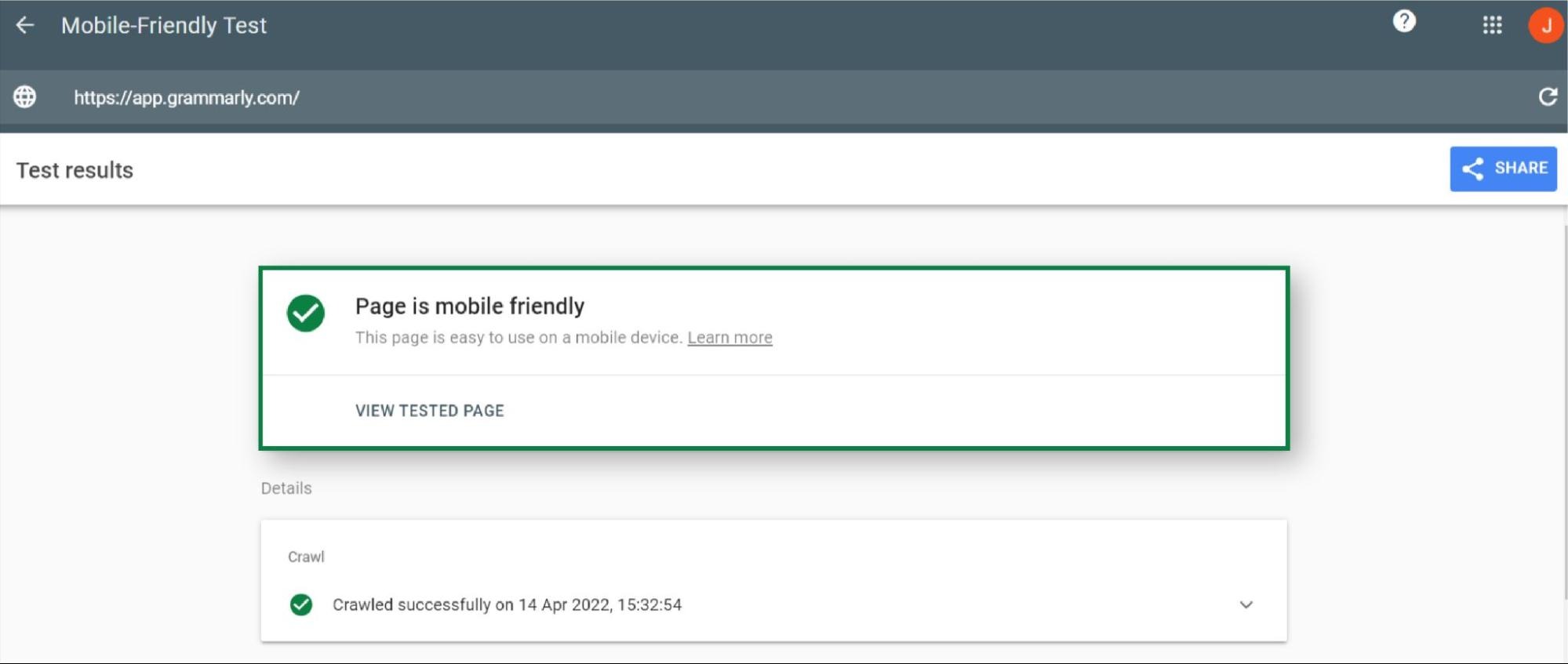
- Mobile SEO Page Analyzer: Developed by Pure Oxygen Labs, the paid tool provides a detailed report about the landing page (for mobile-friendliness).
- Varvy Mobile SEO Issues: This tool helps you identify the areas where the landing page can be optimized for mobile devices.
![]() Weak or Missing Call-to-Action
Weak or Missing Call-to-Action
The landing page should convince the user to take the next step. But how will they do it if they can’t easily find the call to action button or even understand the purpose of the landing page?
Everything on the landing page should direct the user to the call to action.
These tips can help you emphasize the CTA button and highlight it on the landing page:
- Place the CTA button where it is immediately visible. It has to be at the beginning, middle, and end of the landing page.
- Use contrast colors and bold letters to bring attention to the CTA buttons. The text size should be easy to read.

- Use words that are understood by everyone and keep it to the point. Words like buy, free download, earn, save, etc., should be used.
![]() Not Considering the Buying Cycle
Not Considering the Buying Cycle
The landing page should align with the target audience's buying cycle. For example, if the landing page is to create awareness about your business, you cannot expect the user to request a quote or place an order.
The CTA should urge the visitors to subscribe to the newsletter or download a free book to get more information.
It should be as simple as the below-shown image.
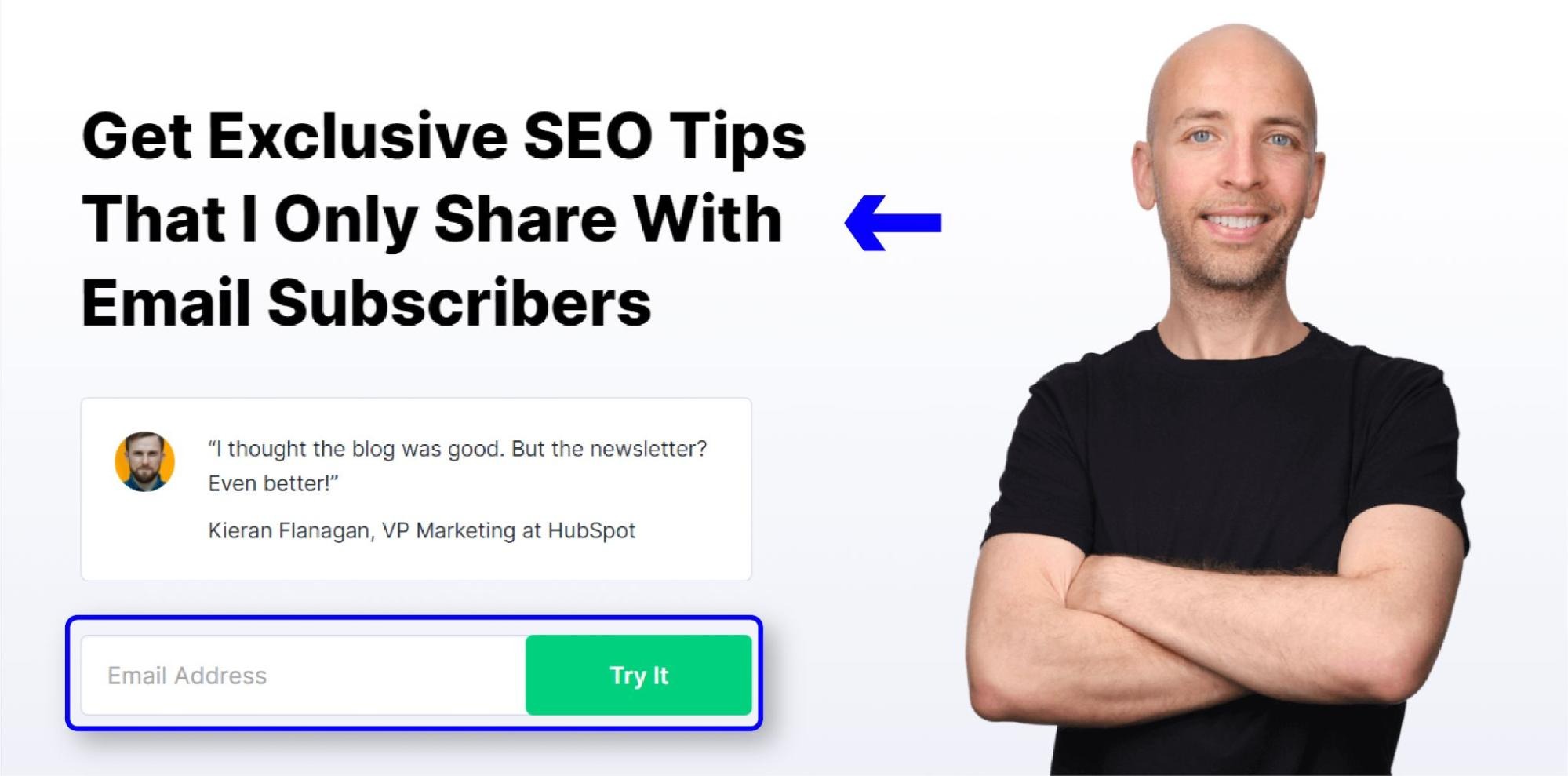
Consider the following stages of the buyer cycle before designing the landing page:
- Awareness that the product/ service/ brand exists in the market.
- The consideration stage is where the user thinks your brand might be an option on the shortlist.
- The customer intends to assess the brand for various aspects.
- The customer finally takes the plunge to buy the product/ service.
- Retain the customer to make them repeat the purchase.
![]() Forgetting to Follow Up
Forgetting to Follow Up
Another crucial mistake many businesses make is to leave the user once they complete the action on the landing page. You need to follow up and extend the interaction time between the website and the user.
Make the users feel valued and cherished after collecting their information.
Also, it’s vital to follow up with the audience who is left in between the action. Take a look at the below email who are executing it well not to let the customer.

Here’s how you can follow up on the users after they complete the action on the landing page:
- Write a customized thank you note with a link to more content or information. This will take the user to another webpage on the same site.
- Ask the user for feedback about the process/steps on the landing page. Keep the feedback form simple to generate more interactions.
- Share details about another relevant offer or plan. Use data analytics to suggest an offer that will interest the user.
![]() Low Quality or Stock Images
Low Quality or Stock Images
We’ll deal with two topics at the same point. The first is about using low-quality or blurry images on landing pages. Get high quality and copyright-free images from the following websites:
- Pixabay: It has more than 2.5 million royalty-free stock images, music, and videos in high quality.

- Pexels: It has free stock images and videos plus an API for website integration.
- Unsplash: It has more than 2 million free and high-resolution images and offers API integration.
The second aspect is not to use stock. While startups and small businesses can rely on stock images to save costs, growing enterprises should have professional photographers take pictures of their products, offices, etc., and use them on the landing pages to increase credibility.
![]() Too Lengthy or Too Short Forms
Too Lengthy or Too Short Forms
It’s difficult to determine the correct size of the form on the landing pages. Anything too small may not give you enough data, and long forms bore the users. They might not fill out the form or complete it if the task is time-consuming.
You have to select the length of the form, depending on your business niche. Minimize the user's work to fill and submit the form.
Follow these tips to create the perfect form for your landing pages:
- Ask only for must-have information. Users don’t like sharing their details with strangers.
- Space out the form and make each field easily visible and accessible from desktops and mobile devices.
- Use radio buttons, drop-down lists, and checkboxes. Don’t expect customers to type every single piece of information you need.
Important Landing Page Optimization Stats
- The landing page conversion rate falls when users have to share personal information.
- Using landing page optimization software can increase the conversion rate up to 30%.
- Having more landing pages (10-12) increases the leads by up to 55%.
- A landing page that loads in less than two seconds have a higher conversion rate.
- About 65% of the top-converting landing pages have the business name in titles.
- 60% of the users consider reviews as an authentic form of content on landing pages.
- Sadly, 82% of the landing pages with low conversion rates were not optimized.
Landing Page Optimization FAQs
What Are The Critical Steps In Optimizing The Landing Page?
Here’s how to optimize the landing page:
An eye-catchy and self-explanatory headline
Crisp description in the subheading
A contact form with must-have fields
The value propositions or USP of the business
A bold call to action with power words
What Are The Top Five Best Practices For Landing Page Optimization?
The landing page should align with the marketing campaign and business goals. Create a landing page for every customer segment, target location, and product/ service. Perform A/B testing to identify the best combination of elements for the landing page.
Why Should I Have A Landing Page For My Website?
Landing pages take users directly to the target webpage and provide relevant information. They are cost-effective and easier to analyze when running ad campaigns and promotions. The process of building a landing page is time and cost-efficient.
What Is The Difference Between A Home Page And A Landing Page?
The home page focuses on promoting the brand and all its offerings. It has links to the leading web pages on the site. The landing page has a specific and narrow purpose of promoting the product/ service to the intended target market.
How To Create A Landing Page That Works For My Business?
The below tips can help you build an attractive landing page for your business:
Place CTA buttons in prominent locations
Personalize the content for emotional connectivity
Build trust through transparency
Add testimonials for credibility
What Are The Best Colors To Use For An Attractive Landing Page?
There are no right or wrong colors for a landing page. A study showed that green was more preferred, though it is important to choose colors based on the dominant colors of the brand. Use A/B testing to find the right color combo.
Are There Any Tools To Optimize The Landing Page?
Yes, several tools optimize the landing page and increase the conversion rate. The famous ones are:
Google Analytics
Unbounce
Crazy Egg
Instapage
Optimizely
VWO
Hubspot
LeadSquared
Is My Landing Page Terrible? How Can I Tell?
If the landing page is not getting enough traffic or visitors are not being converted to leads, the landing page is bad/ not optimized for the target audiences. Use analytics to determine the page performance.
Is Landing Page Optimization Related To PPC Optimization?
In a way, yes. Landing page optimization is seen as a part of PPC optimization. Optimizing PPC refers to tweaking the ad content to increase the quality score. Optimizing the landing page means aligning the landing page content with the business goals.
Can I Find Any Books About Designing Landing Pages?
Yes. You can gather more information about landing pages by checking out the following books:
Landing Page Optimization: The Definitive Guide to Testing and Tuning for Conversions by Tim Ash, Maura Ginty, Rich Page
Wishpond's Complete Guide to Landing Pages Ebook
Do I Need Different Landing Pages For PPC And SEO?
Yes, PPC works differently from SEO, and hence the landing pages for both marketing strategies will also be different. The landing pages must be aligned with the strategy's intent to get maximum results.
What Is The Optimal Number Of Landing Pages For My Website
There is no definite answer to this question. The number of landing pages for a business depends on your online marketing strategy. How many types of promotions (both paid and organic) do you want to run? Create a landing page for each.
How Many Words Should A Landing Page Have To Be Optimized For SEO?
You need a minimum of 500 words on a landing page to optimize it for SEO and increase conversions. It allows you to provide enough information and naturally include the keywords. More words give you more space to convince the user.
Can I Perform On-Page SEO For The Landing Page To Get More Traffic?
Yes. You should do on-page SEO for landing pages to optimize them.
Use high volume keywords
Customize the URL
Increase page loading speed
Adjust the page length
Build backlinks for the landing page
Can I Change The Landing Page Content After Optimizing It For SEO?
It is important to troubleshoot the problem and identify the root cause to fix website indexing issues. Common causes of website indexing issues include problems with the robots.txt file, duplicate content, and 4xx errors.
Is A Targeted Page Different From A Landing Page?
A target page is the one you want to rank on the search engine for the selected keywords. A landing page is aimed to bring more leads and increase conversions. The target page brings sales, while the landing page leads to sales.
Should The Landing Page Be Short, Long, Or Medium?
There is no standard length for a landing page. Landing pages of all sizes have been successful because they were optimized and designed for a specific purpose. The length of the landing page depends on the product/ service you want to promote.
What Are The Must-Have Elements For A Successful Landing Page?
The following are the must-have elements on a landing page:
A meaningful and informative headline
Well-written content with relevant keywords
High-quality images and videos
Customer testimonials
A strong CTA button
Can I Have Any Number Of CTA Buttons On The Landing Page?
The landing page should have one CTA to prevent confusion. Adding a CTA button under the header will positively impact the user. You can add another CTA at the end of the page, though too many will confuse the visitors.
How To Increase The Conversion Rate Through Landing Pages?
Create a well-balanced landing page and optimize it for search engines and mobile phones to increase conversions. Keep it informative, conversational, and credible. The layout should be user-friendly, and the color scheme should please the eye.
Why Should I Have Different Landing Pages For Different Products/ Services?
Here’s why you need different landing pages:
Landing pages are customized for specific offers
Customer segmentation becomes easier
Improves search engine rankings
There won’t be any confusion
How Should You Write Metadata For A Landing Page?
Research the keyword for the landing page and use it cohesively in the metadata. Keep it simple, straightforward, and reader-friendly. Don’t overuse the keyword (not more than three times). The meta description should not go beyond 150 characters.
Where Can I Create Landing Pages Easily For My Website?
A variety of free and paid platforms are available to build landing pages. Here are a few of those:
Leadpages - 14-day free trial14-day free trial
Instapage - 14-day free trial
Unbounce - 14-day free trial
Swipe Pages- 14-day free trial
What Is Conversion Rate Optimization?
CRO is optimizing the web pages to increase the conversion rate and bring more sales/ returns. CRO makes the webpage user-friendly by improving the content, design, layout, and usability. It is a market optimization process.
Why Is My Landing Page Not Showing Up On Google Search?
The landing page has to be indexed (check sitemap XML) for search engines to crawl. It also needs to be linked to the ad campaign you are running. Landing pages are not regular web pages. They show up only when you make them appear.
What Is The Bounce Rate For A Landing Page?
The bounce rate of a landing page tends to be between 70% and 90%. However, you should try to keep the bounce rate at the lower end to increase conversions. 90% is acceptable but doesn’t give you the results you want.
- What is Landing Page Optimization
- Importance of Landing Page (LPO)
- Increase Conversions
- Better Organic Search Results
- Increased ROI for PPC
- Focus on Specific Keywords
- Enhance Brand Reputation
- Data Collection and Analytics
- One Call-to-Action
- Lower Bounce Rate
- Landing Page Optimization Tips
- Keep the Context Clear and Precise
- Keep It Simple
- Add Info Above the Fold
- Provide Limited Period Offers
- Emphasize the Call-to-Action Button
- Where Is the Contact Information?
- Add Media to the Landing Page
- Consistency Is Crucial
- Use Testimonials for Persuasion
- Optimize for Search Engines
- Place Exit Popups
- Conduct A/B Tests for Every Element
- Common Landing Page Mistakes
- Not Enough Landing Pages
- Too Many Distractions
- Sparse or Lack of Information
- Not Paying Attention to UX
- Ignoring Buyer Concerns
- Slow Page Loading Times
- Not Optimizing for Mobile Phones
- Weak or Missing Call-to-Action
- Not Considering the Buying Cycle
- Forgetting to Follow Up
- Low Quality or Stock Images
- Too Lengthy or Too Short Forms
- Important Landing Page Stats
- Landing Page Optimization FAQs

 Increase Conversions
Increase Conversions